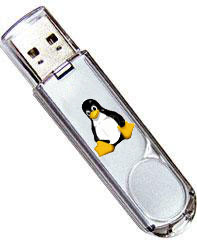 Wine for Ubuntu and Ubuntu derivatives
Wine for Ubuntu and Ubuntu derivatives 
Ubuntu and other Debian-based distributions utilize a special tool for managing packages known as APT. APT is able to automagically install all of the needed dependencies for a software package, as well as keep the package up to date, by scanning what are known as APT repositories. Ubuntu has its own repository of software that includes Wine, however we keep our own repository of the latest available beta packages here for download.
Warning: These are beta packages
The packages here are beta packages. This means they will periodically suffer from regressions, and as a result an update may break functionality in Wine. If the latest stable release of Wine (currently Wine 1.0.1) works for you, then you may not want to use these beta packages.
Adding the WineHQ APT Repository:
Open the Software Sources menu by going to
System->Administration->Software Sources. Then select the
Third Party Software tab and click
Add.

Administration->Software Sources->Third Party Software" width="531" border="0" height="509">
Then,
copy and paste one of the lines below depending on which version you are running.
For Ubuntu Jaunty (9.04):deb http://wine.budgetdedicated.com/apt jaunty main #WineHQ - Ubuntu 9.04 "Jaunty Jackalope"
For Ubuntu Intrepid (8.10):deb http://wine.budgetdedicated.com/apt intrepid main #WineHQ - Ubuntu 8.10 "Intrepid Ibex"
For Ubuntu Hardy (8.04):deb http://wine.budgetdedicated.com/apt hardy main #WineHQ - Ubuntu 8.04 "Hardy Heron"
Trusting the WineHQ APT Repository and installing Wine:
After adding the repository, you also need to add the key for the repository to your system's list of trusted keys.
Download and save Scott Ritchie's key (right click -> save as) to your desktop. Then open the
Authentication tab, click
import key file, and select the key file you just saved (
Scott Ritchie.gpg). It is safe to delete this file after doing this step.

Administration->Software Sources->Authentication" width="531" border="0" height="509">
Click close to finish, and then
reload the package information when prompted. If you have Wine installed, the system's update manager will now inform you of the latest Wine beta release and prompt you to upgrade. If you haven't installed Wine yet, go to Applications->Add/Remove and search for Wine or just
click this link.
Upgrading to a new version of Ubuntu
If you are upgrading the entire system, such as going from Ubuntu 8.04 to 8.10, you will need to come back to this page and add the repository for the new version above. The built in update manager will not switch the Wine repository automatically.
Older .deb packages
Since the APT repository can only hold the latest packages, older versions of the packages are available at
the WineHQ .deb packages archive.
You can install downloaded packages by double-clicking on them.
Alternative command Line Instructions for Installing Wine:
It is also possible to add the Wine repositories and install via the command line, as follows. These may be useful on Kubuntu, Xubuntu, and other Ubuntu derivatives.
First, open a terminal window (Applications->Accessories->Terminal). Then add the repository's key to your system's list of trusted APT keys by copy and pasting the following into your terminal:
wget -q http://wine.budgetdedicated.com/apt/387EE263.gpg -O- | sudo apt-key add -
Next, add the repository to your system's list of APT sources:
For Ubuntu Jaunty (9.04):sudo wget http://wine.budgetdedicated.com/apt/sources.list.d/jaunty.list -O /etc/apt/sources.list.d/winehq.list
For Ubuntu Intrepid (8.10):sudo wget http://wine.budgetdedicated.com/apt/sources.list.d/intrepid.list -O /etc/apt/sources.list.d/winehq.list
For Ubuntu Hardy (8.04):sudo wget http://wine.budgetdedicated.com/apt/sources.list.d/hardy.list -O /etc/apt/sources.list.d/winehq.list
Then update APT's package information by running '
sudo apt-get update'. You can now install Wine normally or by typing '
sudo apt-get install wine' into the terminal.






















